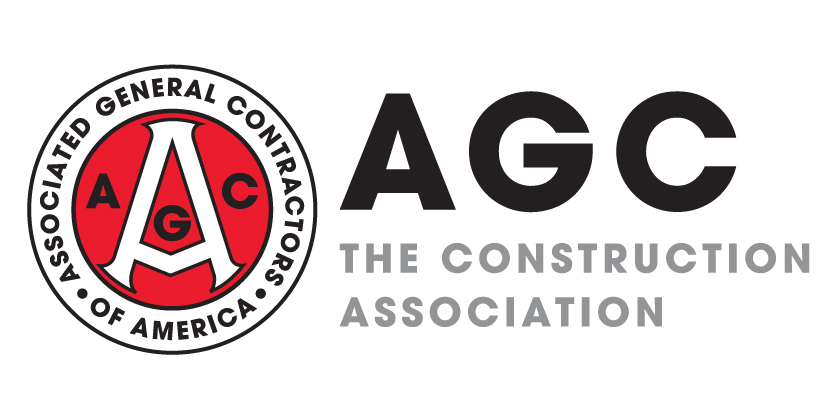
A growing number of contractors have reported impacts on building projects and products from the coronavirus outbreak. An online survey AGC conducted March 17-19 drew 909 respondents, of whom 28% answered “yes” to the question: “Has any owner, government agency or official directed you to halt or delay work on any projects that are either active or expected to start within the next 30 days?” In addition, 11% replied “yes” regarding projects they were expecting to start more than 30 days from now. Respondents reported various causes for project delays or disruptions: shortage of materials, equipment or parts, 16%; shortage of essential craftworkers (including subcontractors’ workers), 11%; shortage of government workers (whether to issue permits or certificates of occupancy, or to conduct inspections or lettings, or to make project awards), 18%. About 22% of respondents said suppliers had notified them or their subcontractors that deliveries will be late or cancelled. Readers (including previous respondents) are invited to visit https://www.agc.org/coronavirus-covid-19 for a wide range of resources and a link to take AGC’s updated survey.
Data reports released last week do not reflect impacts of the pandemic but provide some indication of the state of the industry heading into the crisis. The reports were mixed but generally showed continued growth from a year earlier.
Construction employment, not seasonally adjusted, increased year-over-year (y/y) between January 2019 and January 2020 in 200 (56%) of the 358 metro areas (including divisions of larger metros) for which the Bureau of Labor Statistics (BLS) provides construction employment data, fell in 95 (27%) and was unchanged in 63, according to an analysis AGC released on Friday. (BLS combines mining and logging with construction in most metros to avoid disclosing data about industries with few employers.) The largest gain occurred in Houston-The Woodlands-Sugar Land (12,400 construction jobs, 5%), followed by the Dallas-Plano-Irving division (9,800 combined jobs, 7%). The largest percentage gain occurred in Lewiston, Idaho-Wash. (15%, 200 construction jobs), followed by Panama City, Fla. (14%, 900 combined jobs). The largest job loss occurred in Baton Rouge, La. (-6,600 construction jobs, -12%). The largest percentage loss occurred in Springfield, Ill. (-22%, -700 combined jobs), followed by Laredo, Texas (-17%, -700 combined jobs). BLS made routine benchmarking revisions dating back several years.
There were 274,000 job openings in construction at the end of January, 8.3% less than the January 2019 total of 299,000, but still the second-highest January total in the series’ 20-year history, BLS reported on Tuesday in its latest Job Openings and Labor Turnover Survey (JOLTS) release. Construction firms hired 385,000 employees in January, not seasonally adjusted, 4.5% less than the January 2019 total of 403,000. Layoffs and discharges increased by 4.3% y/y, to 242,000 from 232,000 in January 2019. Quits declined by 12%, to 155,000 from 176,000 in January 2019. All of these y/y changes are consistent with a modest slowdown in construction, although construction employment increased 2.0% over that span, BLS reported on March 6.
The value of new construction starts dipped 1% from January to February at a seasonally adjusted annual rate, Dodge Data & Analytics reported on Tuesday. “Large projects in the office and healthcare sectors provided a boost for overall nonresidential building, while residential and nonbuilding construction starts moved lower. With only two months of data available for 2020, it is difficult to ascribe a 2020 trend. However, some perspective can be gleaned by examining a 12-month moving total. For the 12 months ending February 2020 total construction starts were 3% higher than the previous 12-month period.” Nonresidential building starts were 3% higher, residential starts were up 1%, and nonbuilding starts increased 7%.
Housing starts (units) in February decreased 1.5% at a seasonally adjusted annual rate from January but soared 39% y/y from February 2019, the Census Bureau reported on Wednesday. Multifamily (five or more units) starts slumped 17% from January but jumped 44% y/y, although the data are typically volatile and often substantially revised in later months. Single-family starts increased 6.7% for the month and 35% y/y. For the first two months of 2020 combined, total starts surged 35% compared to January-February 2019, with multifamily starts up 74% and single-family starts up 21%. Residential permits slipped 5.5% for the month but gained 14% y/y. Multifamily permits declined 20% and 5.0%, respectively. Single-family permits rose 1.7% and 23%. However, the coronavirus epidemic appears certain to cause a huge drop in all residential construction for the next several months, despite a drop in mortgage interest rates.
The Architecture Billings Index climbed in February to a 13-month high of 53.4, seasonally adjusted, from 52.2 in January, the American Institute of Architects reported on Wednesday. The index measures the percentage of surveyed architecture firms that reported higher billings than a month earlier, less the percentage reporting lower billings. Any score above 50 (on a 0-100 scale) indicates an increase in billings. Scores (based on three-month moving averages) topped the breakeven 50 mark for all practice specialties: residential (mainly multifamily), 53.5, up from 51.9 in January; institutional, 52.8, up from 52.0; mixed practice, 52.7, up from 52.4; and commercial/industrial, 52.4, down slightly from 52.5. “‘However, firms were just beginning to feel the impact of the dramatic slowdown caused by COVID-19 as this survey was being conducted in early March,’ said [chief economist Kermit Baker.] ‘The rapid pullback in activity throughout the economy will obviously be felt in the design and construction sector, and architecture firms will be one of the first to see how these events play out.’”




